Mary asked: How do I remove wax build up from vinyl flooring? My vinyl flooring is about 20 years old, and the wax is built up. The vinyl is looking yellow. How can I get the wax out or off the vinyl?
When wax builds up on vinyl and linoleum flooring, it can result in a discolored, yellow tone. Applying more wax only makes the problem worse. The original wax must be removed first. Then, a fresh layer of wax can be applied to the clean floor to give a fresh, clean start. Here’s how to remove the wax build up, whether it’s been a couple of months or many years.
wax builds up on vinyl and linoleum flooring, it can result in a discolored, yellow tone. Applying more wax only makes the problem worse. The original wax must be removed first. Then, a fresh layer of wax can be applied to the clean floor to give a fresh, clean start. Here’s how to remove the wax build up, whether it’s been a couple of months or many years.
Removing Wax Build Up from Vinyl Flooring
You Will Need:
- Hot water
- Household ammonia
- Powdered dishwasher soap
- Bucket
- Towels or rag
- Mop with scrubber
Steps to Remove the Wax Build Up:
- Start by filling your bucket with the following mixture:
- 2 parts hot water
- 2 parts ammonia
- 1 part dishwasher soap (make sure it does not contain chlorine bleach!)
- Work in sections for the best results.
- Use the mop to completely cover a section of the flooring with the mixture. It is alright to have standing water at this point.
- Scrub the floor gently with the mop.
- Remove the excess water with the mop.
- Move to the next section and repeat.
- Pay special attention to edges and corners. These areas may need several repeated cleanings to thoroughly get them stripped and cleaned.
- Once the original cleaning water is mopped up, dispose of it.
- Refill the bucket with warm clean water.
- Use the clean water to rinse the floor.
- Dry the floor with old towels or cloths.
Removing Wax Build Up from Linoleum Flooring
You Will Need:
- White vinegar
- Cream of tartar
- Bucket
- Warm water
- Towels
- Scrub brush
- Knee pads
- Rubber gloves
Steps to Remove the Wax Build Up:
- Start by filling your bucket with the following mixture:
- 1 gallon vinegar
- 1 cup cream of tartar
- Work in sections for the best results. This method requires scrubbing the floor by hand. Protect your hands with rubber gloves and wear knee pads to keep from getting sore knees.
- Dip the scrub brush into the mixture and apply it to the floor.
- Use a circular motion as you scrub away the wax build up.
- Moisten a towel with warm water and wring it out well.
- Use the towel to rinse the floor by wiping away any remaining cleaning product.
- Once the wax is removed, rinse the floor with clean water.
- Dry the floor with old towels or cloths.
Additional Tips and Advice
- There are a variety of commercial products that are designed to remove wax build up. These can be applied following the manufacturer’s instructions. Check the label carefully to ensure it is safe for your flooring type.


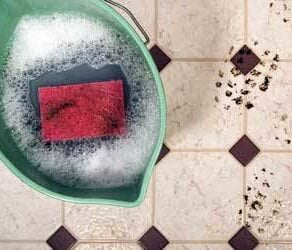
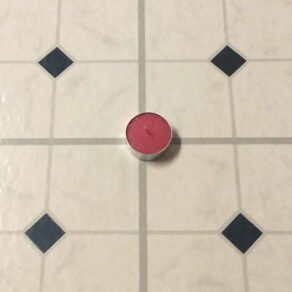
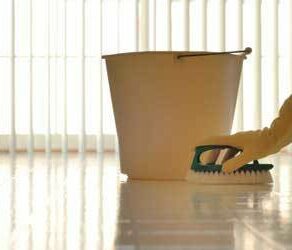
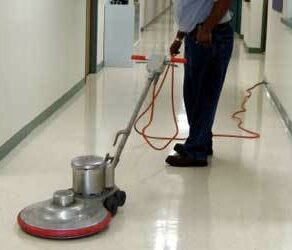
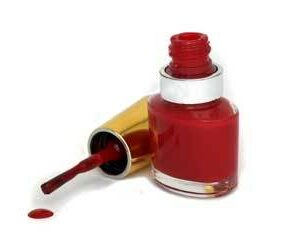


What is a “part”? I can’t believe that if I use a gallon of water (to remove wax build up from vinyl flooring), and a gallon of ammonia, I will have to use a half-gallon of powdered dishwasher soap. It just doesn’t make sense to me. Please advise.
A “part” is whatever measure you use; i.e. one cup, for example. You would use one part ammonia to two parts dishwasher soap, perhaps. Or, just use one part ammonia to one part d/w soap in a gallon of water, one “part” being one cup ammonia and one cup d/w soap in a gallon of water (can measure in a gallon milk jug if you want to be precise). A “part” refers to a ratio. It might be one-half cup to two “parts” (or one cup) something else.
My vinyl flooring was discolored from waxing and I tried the recipe above and it worked perfectly. Thank you so much.
A word of caution – ammonia is very strong and a mask should be worn when using. Also, the area should be well-ventilated to quickly remove the odor, especially if you have pets.
Wow! This really works! I have linoleum floors and they look grungy after living here for two years and even a steam mop didn’t get them clean like when I moved in. I did the ammonia/water/powdered dishwasher detergent mix and right away I could see it working as soon as it splashed onto the floor. It was picking up dirt and moving it. It’s not as easy as mopping. I did use a non-scratch kitchen sponge to scrub it, but holy cow. The floor looks like new again! A part is whatever size you choose to make it. I tried a small batch at first to see how it would work. I did one cup of ammonia and one cup of water and half a cup of detergent. It worked great and cost less than five bucks! One word of caution; it does dry quickly so only work in sections or you’ll be having to scrub dried mixture off your floors. I’m so happy I found this tip! Thanks!!
Twenty years of build up came right off. Used a scrubbing brush, but make sure you have a well ventilated room; the fumes can get a little strong. Thanks again. My floor looks like new.
The advice to never mix ammonia with bleach is well founded. I made that mistake one time by placing the mix together and setting it on the floor. The front door to the kitchen entrance was open and I noticed the plastic container beginning to expand and foam up. I kicked the bottle out the the door and it landed on the ground and exploded. A very seriously bad combination.
What is the difference between vinyl and linoleum. Wouldn’t both mixtures work?
What dish soap is the best and safest?
Truly Amazing. I did a test patch on my 30-year-old vinyl flooring in my laundry room using the ammonia/hot water/powdered dishwasher soap. The fumes weren’t very noticeable. I’m going to continue by tackling a 3ft square patch at a time. I didn’t use a scrubber brush or sponge; simply good cleaning towels and elbow grease. Incredible contrast. I wish I knew how to attach a photo of before/after comparison. A picture is worth a thousand words!
I know the more ammonia, the faster it cuts the wax, but why powdered dishwasher detergent? Why can’t it be a liquid?
I believe the powder is for the abrasive qualities…OR to soak up some of the wax buildup that will form. It left a film on our floor – so I stopped using it after one small patch!
Can I use baking soda instead of cream of tater? Will it work with the vinegar?
Cynthia,
Replacing the cream of tartar with baking soda probably won’t work. Baking soda is a strong alkaline, which would neutralize the acid in the white vinegar. Cream of tartar is an acid. You need the cleaner to be acidic to cut through the wax.
Source: Culinart Kosher – Citric Acid and The Science of Meringue
I tried the formula using cream of tartar. First, it calls for a very large quantity. All I could find were the small containers so it took me about 4 to have enough. I gave it a chance, but this formula did not work. Yes, I have about a 20-year wax buildup, but it was stated that this formula would work. My advice: If you have vinyl or linoleum flooring with a 20+ year wax buildup, just use straight ammonia.
What is the difference between vinyl flooring and linoleum flooring?
Mary,
Vinyl and linoleum are made from different products. Linoleum is natural, made primarily from linseed oil, but also has other ingredients like wood or cork fiber. It’s so natural that it can be composted when you replace it. Vinyl is a synthetic product made from plastic (polyvinyl chloride). Linoleum is fully dyed throughout, whereas vinyl is only printed on the surface (meaning the design can wear off in heavy-use areas). If you are trying to identify what type of floor you have, look around for any visible areas where the pattern has rubbed off the floor (meaning the floor is vinyl). If not, pulling up a corner in a hidden area to examine the edge is the best way to know for certain. You will be able to see if the pattern goes all the way through or if it’s is only on the surface. Also, linoleum is much thicker (1/4″ thick or more whereas vinyl is about 1/8″ thick). Good luck!
Source: Hunker – How to Tell If You Have Vinyl or Linoleum Floors
Source: Ecycle Environment – Recycle Your Old Linoleum
For one, linoleum is usually much older. Mine is from 1938. I have to wash and wax it every month, using a true wax and applicator of lambs wool. The products of “wash and wax” in one step wouldn’t work with linoleum, only pre-wax vinyl floors.
I used ammonia and vinegar; didn’t get the wax off the floor. Any ideas now?